
Sue Tompkins. “Untitled,” (2011). Chiffon, safety pins, zipper. 21 x 27 inches. Courtesy the artist and The Modern Institute/Toby Webster Ltd., Glasgow. Photo: Ruth Clark.

Kal Spelletich. “With Your Head In The Clouds,” (2013). Video camera, monitors, video projectors. Dimensions variable. Image courtesy the artist.
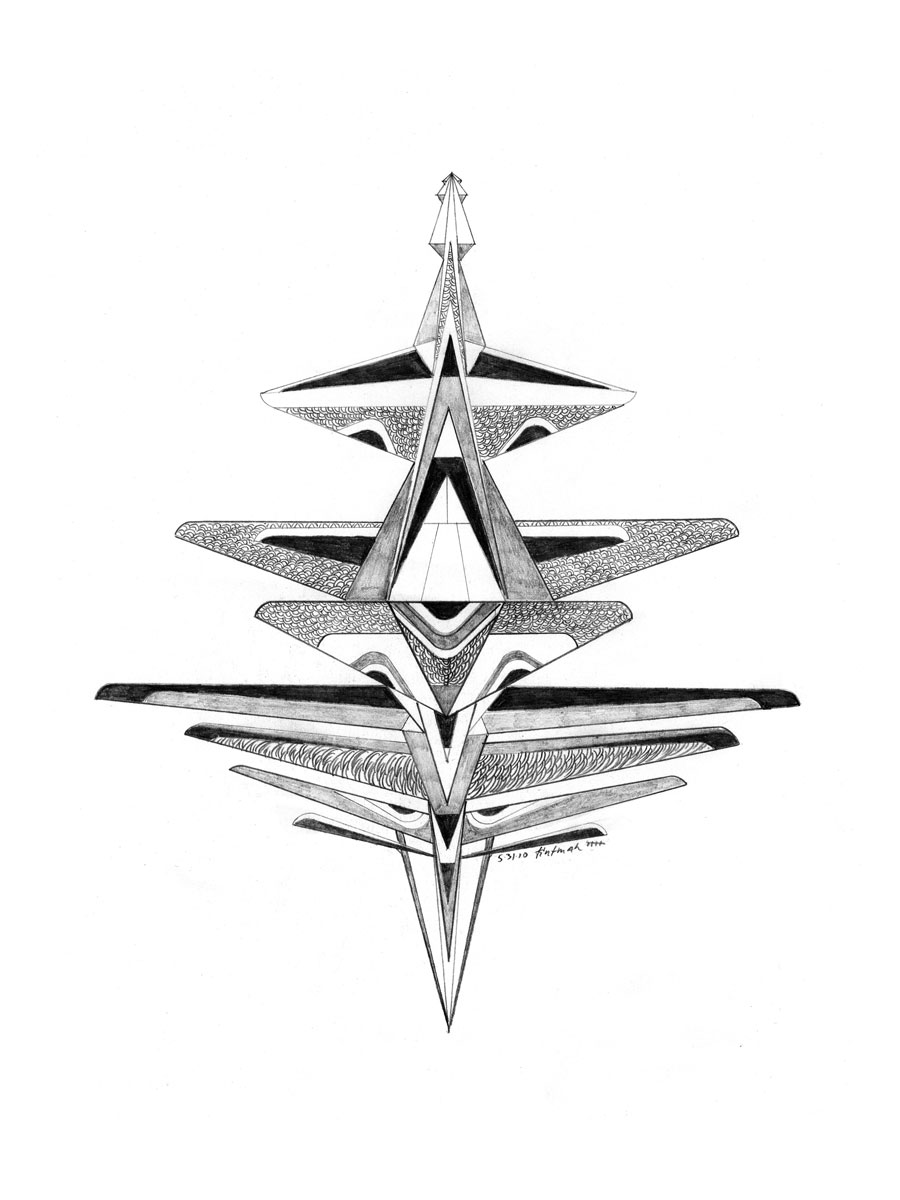
Justin “Kutmah” McNulty. “Untitled,” (2010). Graphite on paper in frames. 8.5 x 11 inches. Courtesy the artist.

Liz Harris. “Untitled 2,” (2010). Ink on paper.

Sue Tompkins. “Now Here Is Also Nowhere,” (2012). Installation view. Henry Art Gallery, University of Washington, Seattle. Courtesy the artist and The Modern Institute/Toby Webster Ltd., Glasgow. Photo: R.J. Sanchez.
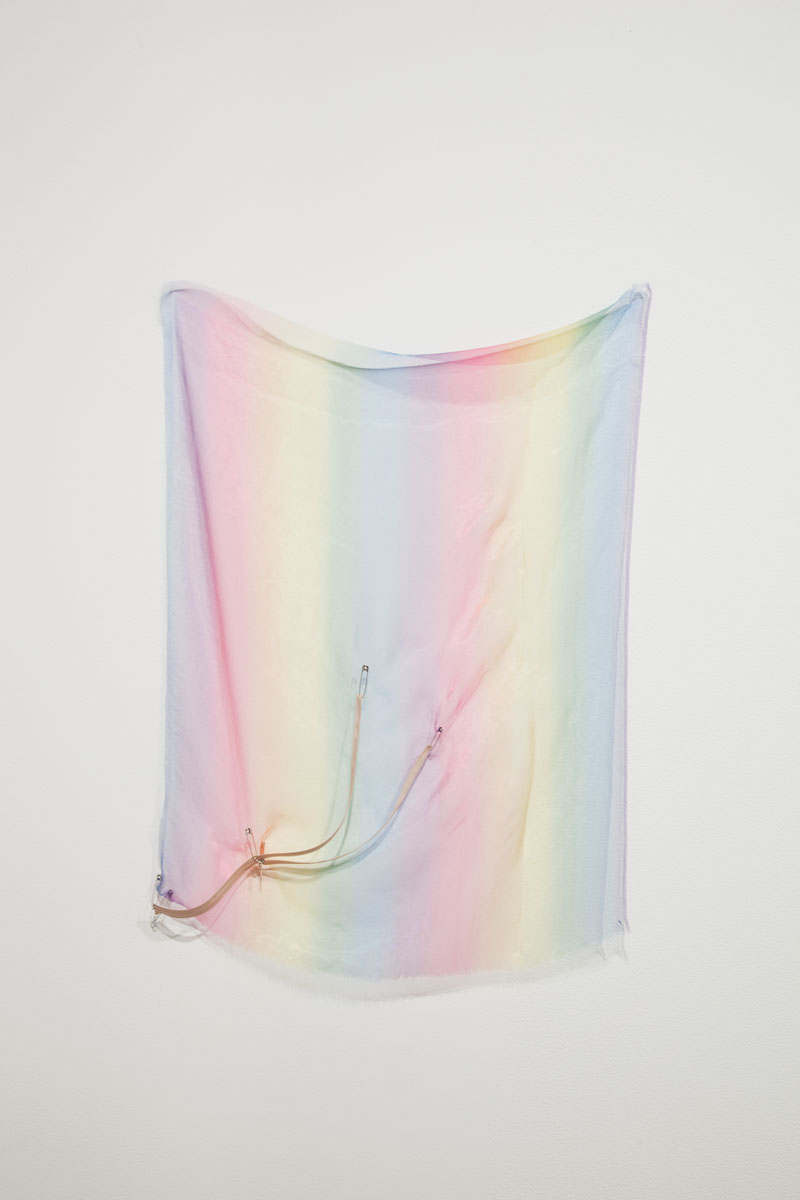
Sue Tompkins. “Seven,” (2012). Rainbow organza, safety pins, zipper. 33 x 26 inches. Courtesy the artist and The Modern Institute/Toby Webster Ltd., Glasgow. Photo: Gene Pittman.
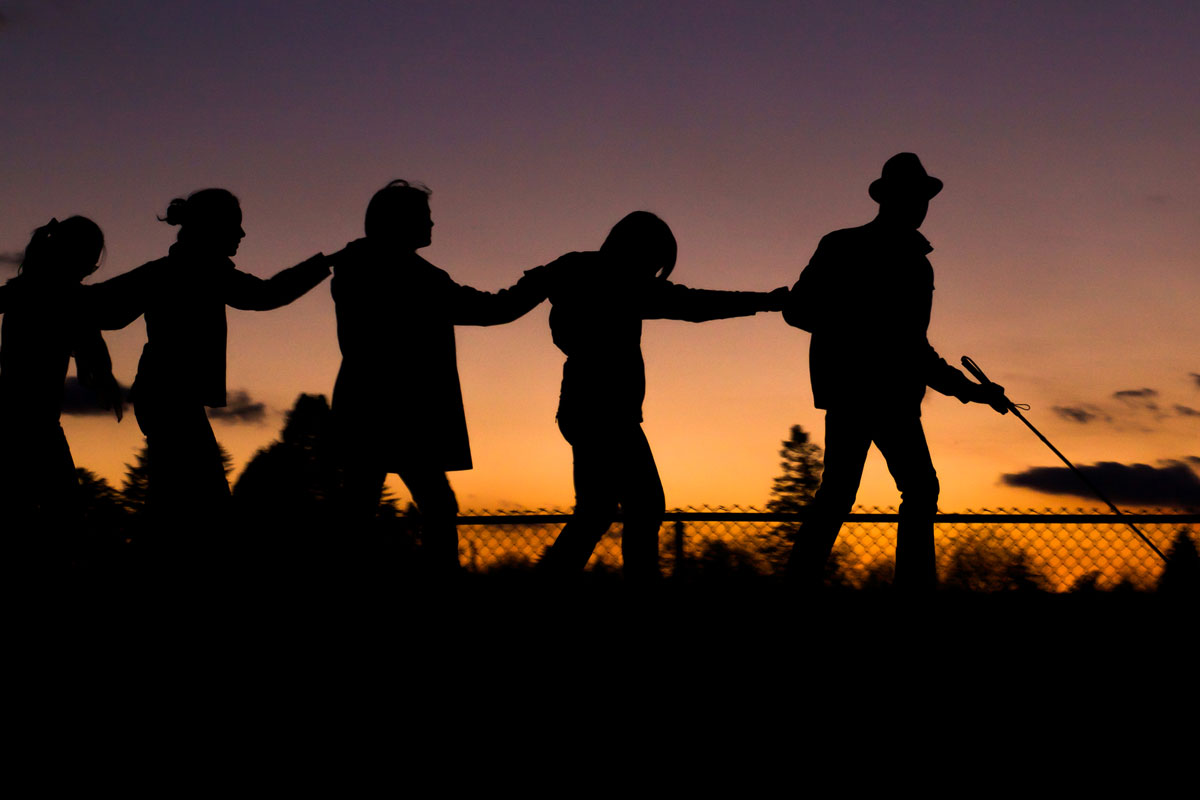
Carmen Papalia. “Blind Field Shuttle,” (2012). Walking tour. Duration varies. Courtesy Cantor Fitzgerald Gallery, Haverford. Photo: Thom Carroll.
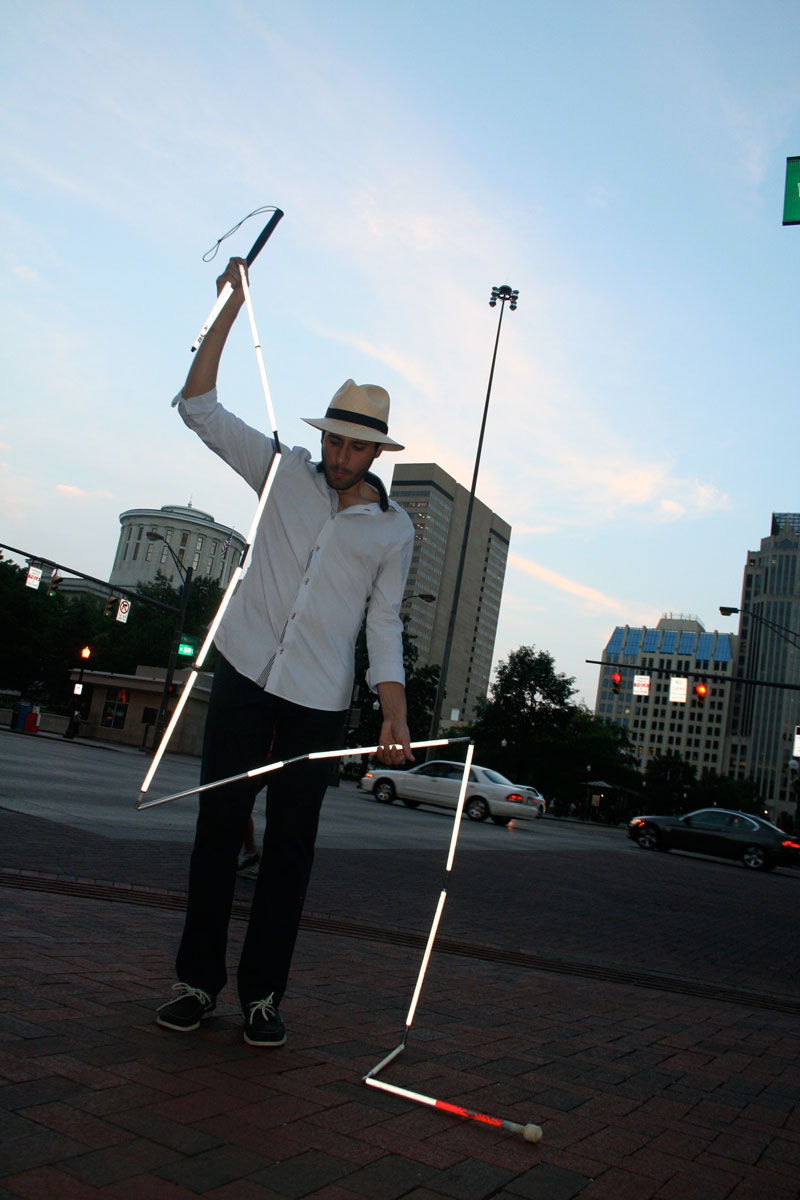
Carmen Papalia. “Long Cane,” (2012). Performance. Duration varies. Courtesy of the artist. Photo: Kristin Rochelle Lantz.

Alicia McCarthy. “Untitled,” (2010). Colored pencil and house paint on found wood. 19 x 19 inches. Private collection courtesy the artist and Jack Hanley Gallery.

Alicia McCarthy. Exhibition View. (2013). Courtesy the artist and Jack Hanley Gallery, New York.

Alexander Bradley Cohen. “Untitled,” (2013). Oil pastel on paper. 24 x 18 inches. Courtesy the artist.

Alexander Bradley Cohen. “Untitled,” (2013). Oil pastel on paper. 24 x 18 inches. Courtesy the artist.

Kim MacConnel. (From left to right) “Big Foot, Coffee, Semifore, Weber, Gott, Tipsy, Wash, Testing, Timotel, Brillo, Professor, Green Bottle, Emmett, and Ghost,” (1994). Found plastic on cardboard sconces. Dimensions vary. Courtesy Museum of Contemporary Art, San Diego. Photo: Pablo Mason.
[](#)[](#)
You’re Only As Good As Your Status Symbols
Group Show Showcase, Object Affixation, & Openness
Introduction Written by Matthew Bedard
Artist Chris Johanson, who was last seen by _Flaunt_ in the rear of a shuttle SUV toting the lot of us to this spring’s MOCA gala (the same museum which is currently hosting his show, “Within the River of Time Is My Mind,” at the Pacific Design Center), may or may not have remarked at the time that he liked the night, that things felt good. He may or may not have shared that he’d caught _The Hobbit: An Unexpected Journey_ over the holidays and quite liked it; or that he always travels with a binocular flask, the optical bits of which screw off so that “vision,” so to speak, becomes intoxication. He may or may not have even been in this SUV.
But what Johanson did say, at some point between then and now, regarding the valuation of artifacts at play with his 10-artist curation, “Artifacts of A Life Lived By the Living (To Live),” opening at L.A.’s Craft and Folk Art Museum (CAFAM) this September, was this: “We live a life of symbols. Objects are something that we infuse with magic or meaning—just like the languages we speak. The value these objects have is to occupy our time with their symbols, the object’s power as it affects our experience of life. Money gets in the way of many things. Money and disparity and objects and living and magic and dying.”
The show sees ensemble expression in the way of drawing, painting, installation, sound, and movement from the artists featured herein, about which Johanson remarks, “CAFAM asked me \[to do the show\] and I feel it’s a good fit because the very title is a gentler entrance into art sharing for me. It implies an openness to presenting things that vibrate more as a communal document, as opposed to art as a capitalist trophy. I don’t know if the show will read that way, but I’m excited to share this art with people.”
[](http://images.squarespace-cdn.com/content/v1/56c346b607eaa09d9189a870/1487268448148-TE7JK1WRU5U221RC44BK/05.TMI-TOMPS-29392.jpg-TOMPS-29392.jpg?format=original)
**Kal Spelletich** Written by Connie Shen
It mostly starts the same. You’re four or five with a frequent curiosity. Maybe you collect things—sticks and stones, pretty glass bottles and wire, then car parts and scraps you learn to bend and break until they become something entirely different. “But at what point is it art?” Iowa born Kal Spelletich is not sure.
“I had never really heard of art until I was 20, to be honest. I had heard the word, but I had never seen it or been to a museum or gallery and it wasn’t talked about at the dinner table.” Spelletich didn’t always have art, but as far back as he can remember he had a practice. His father owned a construction company and Kal’s childhood and adolescence were spent around factories and machines and people working with their hands. “I see this lineage in my own mind. I think to myself, ‘Well gosh, I sort of work like my pop did’ or ‘Oh this feels like the old factory I used to work at as a teenager, except I fold it into art.’”
Spelletich’s work straddles the line between man and machine, organic and inorganic, and, most recently, dream and reality. It raises questions about the role technology plays in our natural lives and the danger of preoccupation. By creating experiential art that allows for audience interaction, Spelletich challenges his viewers to test their boundaries for fear and control. His past works have included pieces that juxtapose natural elements (like trees and plant life) with technology, and others that ask the audience to become collaborators. Another piece titled, “Fire Shower,” surrounds an audience member in a cage of fire, experimenting with how far people are willing to submit themselves to external forces, creating a physical dialogue between man and machine.
At the Craft and Folk Art Museum in California this September, Kal’s piece again invites audience collaboration. “With Your Head in the Clouds” is about the power of daydreaming. And while a quick reverie may not be the point of conception for every _objet d’art_, it’s not a bad place to start.
[](http://images.squarespace-cdn.com/content/v1/56c346b607eaa09d9189a870/1487268468034-6H4FXXFDTBLF7IG1LAHF/IMG_8376.jpg)
**Justin “Kutmah” Mcnulty** Written by Polet Zargarian
A couple of years ago, Justin “Kutmah” McNulty jumped out of his burning house in Silverlake, Los Angeles, leaving behind more than thirty sketchbooks filled with his drawings of psychedelic landscapes and sensuous women and, along with them, a part of his past. It was one of several transitional periods in the artist’s life that led him to where he is today. “It’s good to let go,” he says, but acknowledges that it was a wakeup call.
The fire incident wasn’t his last time facing a change in trajectory on his artistic path. In 2010, Kutmah was arrested and spent two months in jail under immigration charges. Today, after an eventual deportation back to his home country of England, he’s a changed man, and his artwork demonstrates his evolution.
While in jail, he was compelled to create as a way to block out everything around him, to keep him sane. On 23-hour lockdown, his patterns were confined by jail bars, prompting him to use straight lines in his work for the first time. During the one hour he was allotted per day to go outside, Kutmah would “just look up at the sky and look at the birds and want to be one.” His visual influence translated into “Two Soups and a Honey Bun” series, a collection of 39 drawings Kutmah made in jail. The drawings are clearly reminiscent of the underbelly views of birds in the sky, built by the bones of jail bars. This might be read as an example of the therapeutic capacity of art, but as Kutmah sees it, it’s “Just some lines on paper. It’s a beautiful thing!”
Without a message or a purpose, besides ocular gratification, the self-described decorator leaves it up to the viewer to critique his drawings. It is the simplicity of a quality writing tool (the artist often works with a rapidograph pen to assist him in precision of meticulous details) and a nice sheet of paper that intrigues him.
Aside from his participation in art exhibits, such as the upcoming exhibit at CAFAM in Los Angeles, Kutmah has established himself as a self-taught DJ in the eclectic underground music scene. He now spends most of his time challenging himself with making music as he tours worldwide, and takes life one strange, unexplained experience at a time. “Thinking back, I’m glad I got deported, just like the flying birds.”
[](http://images.squarespace-cdn.com/content/v1/56c346b607eaa09d9189a870/1487268470741-1KRCC4372JS9VL897XDP/KUTMAH-053110.jpg)
**Liz Harris** Written by E. Ryan Ellis
I think I like to lose myself in it,” admits Liz Harris, earnestly and with a kind of pristine wonderment, like the dweeby kid standing at the bus stop gushing about her transcendental enjoyment of last night’s math homework. Only Harris, represented by Nationale in Portland, stated this in response to her geometric drawings being compared to Buddhist mandalas, antiquated patterns tailor-made for acute appreciation and higher consciousness. And that dweeby kid? Well that’s Harris in her previous life, once-upon-a-time taking kindly to mathematics and science before, as she puts it, “I broke my head open and got into art, music, and ended up with an art degree.”
But it wasn’t a degree that led the Northwestern artist to Los Angeles, where a cluster of her work will be shown at the Craft and Folk Art Museum in coming months; it was the beautifully subtle intricacies of her art. In the ashes of former math-letism, Harris found the left side of her brain and ran away with it.
She set out colossally. “I was in an illegal art space in San Francisco in the early 2000s…I’d created these huge, bright, fluorescent, insane installations. But I hated the process. So I said, ‘What can I do that lets me nerd-out on the same kind of intricacy and detail?’” Harris had to combine the left and the right; to extend the metaphor: the calculated teacher’s pet and the kid who pees his name into fresh snow. So they became one. Harris renovated the artistic process and started working with only ink on paper, using systematic strokes of the pen based on thoughtful rules. “It was part of wanting to reduce factors down to as little stress as possible…I like working with a minimal amount of variables.” Factors, variables…the math-speech never left the artist. “I kind of set up a formula for each drawing style, I’ll set up multiple drawings with one each. A lot of them are pretty rigid and geometric or they end up in structures that look pre-formed, but I’m improvising as I’m doing them.”
In fulfilling her artistic existence, Harris also performs music under the name Grouper, in the same vast-minimalism strain she uses in her art. Often the two entities feel the same. “From the get-go I have used my own drawings on releases, and started both practices exactly at the same time. The first drawing that I made went on the first release.” But Harris explains each serves its own regenerative purpose, “I use them to switch off; I use art to take a break from music.”
Harris is represented by Nationale in Portland.
[](http://images.squarespace-cdn.com/content/v1/56c346b607eaa09d9189a870/1487268467223-UIR3C3FHE0DS31LLAIWZ/Harris_Liz_Untitled-7-2.jpg)
**Sue Tompkins** Written by Adriana Dunn
Back in the day, musician Sue Tompkins was in a punk band, Life Without Buildings, with fellow alumni from art school. She recorded two critically acclaimed albums, her striking, sweet, and haunting vocals drawing in devoted fans. When the band finally dismantled in 2002, admirers were disappointed, but her performing days weren’t done; they were ripe for a new outlet.
Fast-forward a bit and the Glasgow-based artist works in a new medium. “I think being in a band and singing and writing, just really led me to feel happy when I’m performing like that,” she says of the transition into performance art.
It’s easy to sense that she loves the process of creating, from her on-stage-bounciness to the imaginative subtleties of her email responses.
“The inspiration for the work comes, I think, from a mixture of current concerns, thoughts, and ideas I have at the moment,” Tompkins says of her installations of works on paper. “The text is often written months previous and intermingled with new text additions, thoughts, statements that I feel are more immediate and made during the process of writing and making the work itself.”
The works also form the foundation of her live performances, as she flips through scripts comprised of unbound single sheets of newsprint filled with borrowed and original text, toying with word uses and delivery as she goes.
In a 2006 performance at the Tate Britain, she flipped through a binder of loose newsprint, bouncing to her own beat and occasionally looking up to smile and make eye contact with members in the crowd. In many ways, the act was not a far cry from a musician on stage playing to fans. “I think it asks a lot of the audience, but if they like it they’ll stay, and if they don’t, they go. And I understand both of those feelings.”
Artist Chris Johanson recently invited Tompkins to take part in a show, “Artifacts of A Life Lived By the Living (To Live),” at the Craft and Folk Art Museum this Fall. The show focuses on emerging artists who have adjusted their art making practice as a result of changes in their life. Tompkins’ cataclysmic event came five years ago when she gave birth to her daughter Mary, which she says has given her more focus. “Change, or lack of it, can often be such a catalyst for making work,” she says. “Sometimes it’s just about the lack of change and the permanent that I find very interesting.”
[](http://images.squarespace-cdn.com/content/v1/56c346b607eaa09d9189a870/1487268445622-ELG244GY1WWX5NNMYYIP/02.2012-ST-Henry-Art-Gallery-instal.jpg-ST-Henry-Art-Gallery-instal.jpg?format=original)
**Carmen Papalia** Written by Megan Bedard
Imagine walking down a rough street in Oakland with your eyes closed. Would you rely on your ears? Would you reach for something tangible to situate yourself? Would you smell your way down the street?
For Social Practice artist Carmen Papalia, who’s visually impaired, this kind of experience is simultaneously quotidian and artistic. By necessity, he approaches his surroundings this way every time he leaves his front door. But he also does it for creative purposes, by taking participants on closed-eyed walking tours, removing them from the familiar.
It’s obviously an opportunity to think about sightlessness, but don’t mistake it for an exercise in what it’s like to be blind.
“I’m intentional about saying that it’s not about simulating visual impairment; it’s not about ‘walking in my shoes’ or ‘how is it to walk blind’ because then it becomes about simulation and you can escape whenever you want…My access to a place reflects a particular way of being and that’s what I’m introducing to the participant: a different way of being that is revelatory, is exciting, with a lot of possibilities for exploration.”
Papalia has walked participants through urban and rural spaces alike, from Oakland to Vancouver, to Southern California, where he’ll return in the fall to participate in Chris Johanson’s show at the Craft and Folk Art Museum in Los Angeles.
When he’s not leading others, he’s experimenting with what it means to put his trust in someone else for guidance. In his performance “Mobility Device,” for example, Papalia walks streets with a marching band in his wake. The band performs musical cues to make him aware of his surroundings, and provides information that might be relevant to him on his journey. As he puts it, “It represents a non-institutional (and non-institutionalized) temporary solution for a white cane.” Fixtures of a place like curbs, lampposts, and sandwich boards become “notes in the soundscape.” The act itself becomes an exercise in many things: trust, creativity, imagination, exploration.
The experience of a tour is different for everyone, but Papalia finds that in some capacity or another, it’s usually transformative.
“There are all these images throughout art history of blind people, like a figure of a blind person touching a sculpture. And the blind person has an enlightened look on his face, kind of transformed by the art experience. I think the reason that painters were drawn to those images—and why they are so prevalent throughout art history—is that they show a non-biased and non-mediated experience of art.”
That’s a particular draw for him—the possibility of showing people new ways to interpret something, new ways to process it. “The blind person is touching something in order to understand it. And that’s an uncharted territory; even now, we learn through our eyes most of the time, most of us do. And my challenge is to show people other ways of learning and through other senses. When we think about the words we can use to describe a tactile experience we are very limited because we just don’t have practice with it. That’s what I’m trying to do with my work: give people practice.”
[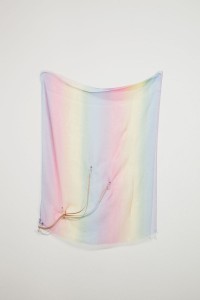](http://images.squarespace-cdn.com/content/v1/56c346b607eaa09d9189a870/1487268448642-JJS766L9VR0CU0M45N7L/10.TMI-TOMPS-32421-Midway-instal.jpg-TOMPS-32421-Midway-instal.jpg?format=original)
**Alicia Mccarthy** Written by Nicholas Corona
Hey neighbor,” exclaims Alicia McCarthy to a familiar face walking by her West Oakland home. Chatting as she builds a bed frame, she explains how, inspired by one of her communal artist buddies, she lets go of her art. “I’ve never had a real desire to hold onto my work. I’ve always made a ton of work for other people. I traded a lot of it. I’ve given about 80 percent of it away, or close to it.” A renter for most of her life, the impetus for gifting her art is, in part, based in practicality: She doesn’t have the room to keep it all. Other pieces are never meant to be kept. A case in point: the piece she made for her 97-year-old grandma, colorful interwoven strands that create a story-telling pattern resembling a beautiful American quilt.
McCarthy’s folk art is rustic, textured, and cozy—enhanced by the fact that she uses borrowed materials to make it—yet crisp and vibrant. The Bay Area artist operates on the philosophy that you can take what’s around you and make it beautiful. She seldom, if ever, uses new paint and canvases. “I’m not sure what draws me to a certain wood. It kind of decides the first step for me. It dictates a certain entry point.” The found items lend historical narratives to her work, serving as part of her artistic message rather than solely the vessel by which she communicates with her audience. Her preference for the flawed over the pristine allows a distinctive synergy of form, color, technique, and materials. “It’s neat. I come across something that already has this engrained history, whether it’s just discarded or whether it’s a cover that has scratches on it. It gives me something to interact with.”
Her free and loose approach has paved the way for numerous gallery shows over the years in Los Angeles, New York, and occasionally overseas. She and a few members of the San Francisco-based art collective Clarion Alley Mural Project (CAMP) traveled to Yogyakarta, Indonesia, where they collaborated with local artists to enrich the community with public mural art. Her contributions: a set of vivid rainbows with the words “Nobody’s Home?” splashed across a wall, and an installation with moving parts and painted drums that allowed kids to interact.
Travel opportunities aside, Alicia wants to stay in her home in Oakland, fighting off rent hikes precipitated by the ever-impending gentrification of what was once a rough hood. Galleries, coffee shops, and restaurants multiplying around her seem scary, although the bourgeoning real estate microcosms could bring more local art enthusiasts to enjoy her work. If anything, restoration of seedy old theaters could offer McCarthy a gold mine of inspiration.
[](http://images.squarespace-cdn.com/content/v1/56c346b607eaa09d9189a870/1487268460120-JRL8L3F459OXDUSV00IQ/Blind-Field-Shuttle-2012-walking-tour-duration-varies-image-by-Thom-Carroll-courtesey-of-the-Canter-Fitzgerald-Gallery-2.jpg)
**Alexander Bradley Cohen** Written by Anna-Francesca Mehl
I always felt like I was ‘less than’ and never good enough. Sometimes, through art, I go back to those feelings and I’ll make paintings based off that,” artist Alexander Bradley Cohen says of his work, comprised primarily of oil pastels and installations. Infused with youthful imagery (and standing, on occasion, as large as six feet tall) his paintings are defined by rich palettes and bold lines.
Adrift at sea in his teen years at a school that he felt squelched independent thought—compounded with the general malaise of adolescence—Cohen had few avenues for self-reflection. Now a college student, his art enables him “to be by myself, and reflect on everything.”
Firmly rooted in his past but evolving with the present, Cohen’s creativity is also propelled by an appreciation for his newly found comprehension of emotions. As such, his work occasionally reveals its creator to be someone who isn’t anxious or self-conscious but blithe, relaxed even, imploring the viewer to find out how he feels and what story is being told.
A recent piece of Cohen’s, “beee be be bop,” illustrates a collection of oddly intertwined body parts, diverse shapes, and intriguing colors. “I listen to a lot of music; hip-hop music. The beats and music are spiritual for me. The feeling all comes out on paper.” (Cohen, fittingly, admires rapper Jay Z. The parallels, consciously or unconsciously tended to by Cohen, are noteworthy: Both found success in spite of difficult upbringings). For viewers, the challenge seems to be to visualize a beat or rhythm, to find physicality in the word “bee bop.”
Cohen’s fascination with emotional exploration and appreciation, then, also extends to his viewers. “I would want someone to feel joy for living, or joy for life. Like every day they live will get better. The drawings are about the moment. If you just go through it then it’ll be better, instead of just giving up. If you just give up you’ll never experience the end.”
Of late, he’s broaching a new wave of inspiration. His most recent showing will exhibit in the fall at CAFAM, a museum that prides itself on exposing the cultural landscape of Los Angeles and artistically representing the variety of different communities. Fully aware of his recent upward trajectory, he reflects with a big grin. “I feel extremely honored, overwhelmed, and excited. There is also a responsibility to use the opportunity to do something good. That’s sometimes what my art is about, it’s about being nice.”
[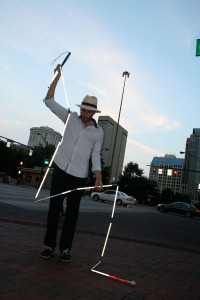](http://images.squarespace-cdn.com/content/v1/56c346b607eaa09d9189a870/1487268473848-VJIXQLLQG1D1KA9TGR3Z/Long-Cane-2012-performance-duration-varies-image-by-Kristin-Rochelle-Lantz-courtesey-of-the-artist-2.jpg)
**Kim Macconnel** Written by Beau Reed
Kim MacConnel knows when it’s time to move on. As the artist who brought plastic beach trash to a museum, and brightly colored geometric paintings in the time of minimalism, he changes genres, materials, and movements more often than the average person changes underwear. “My career looks like a group show. I’ve explored tons of different avenues, from painting to sculpture to working on furniture, designing things, doing photography, all kinds of stuff. A lot of it is based on following an idea, and the idea takes you.”
When he first started making art, surrounded by minimalism and conceptualism, his work was an outlier on the stark canvases of the moment, especially considering he wasn’t using typical canvases: Early in his career MacConnel thrifted old bed sheets that he painted, cut apart, and re-sewed to intrinsically fit his motif.
His departure from minimalism naturally led to the Pattern and Decoration movement of the ’70s, a movement MacConnel pioneered with the help of Robert Kushner and an unnamed art-critic/teacher from New York, shortly after graduating from UC San Diego’s graduate art program. He incorporated the repurposing of non-traditional materials and took inspiration from artwork of the non-western world.
This year MacConnel was asked by artist Chris Johanson to re-show his collection “The Age of Plastics” at the Museum of Contemporary Art of San Diego, where he resurrected his “Beach Trash Clowns” exhibition featuring clowns and a very large mound of plastic found from the beach. The story behind the piece involved a retelling of “the industrialization leading up to militarization” during WWI. “Reflecting something of the time as a material and as a kind of engagement, I immediately thought plastic,” something so involved in 1994, when he originally displayed the show, and even moreso now in a world of technological advancement.
MacConnel’s latest obsession is enamel paintings, and his work in the medium has brought him more recognition in the art world than he has experienced in years. “They feel like modernist abstraction, like something from the ’30s or ’50s. A design of very simple, geometric forms, with only five or six of them repeated in various ways, with different concepts.” He starts with enamel, applying it to one specific area; then, while the paint of one color dries, he goes deep inside his mind for the piece that will complete his puzzle. After making more than a hundred of the designs, he’s found that repetition is not in the near future for his highly demanded works. Once he finishes a set of two murals for the San Diego Court House, he doubts that he’ll do more.
In New York this year, MacConnel will embark on one more exhibition, and until another idea comes to him, the retired teacher is on a “forced vacation,” waiting for the next movement his mind and heart tell him to pounce on.
